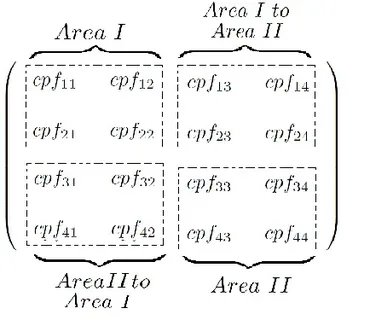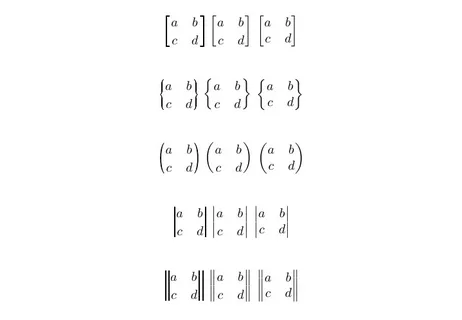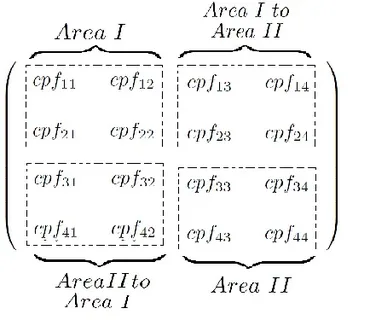In this article, we’ll break down what a bracket matrix is, explore its various uses, and explain why this structure is more versatile than you might think. We’ll also answer some frequently asked questions, and by the end, you’ll see how bracket matrices fit into different fields, from linear algebra to competition planning.
What Is a Bracket Matrix?

At its core, a bracket matrix is a structured format used to represent data or relationships within a grid-like system, often enclosed in square or round brackets. The concept of a bracket matrix can vary based on context, as it’s used differently in fields like mathematics, sports, and computer science.
In mathematics, particularly in linear algebra, a bracket matrix typically refers to an arrangement of numbers or variables within square brackets. This setup helps perform calculations such as matrix multiplication, addition, and transformations.
In tournament settings, a bracket matrix visually organizes the competition structure, showing which teams or players are matched up against each other. This allows for easy navigation through the rounds, displaying outcomes and matchups as the tournament progresses.
Different Types of Bracket Matrices
A bracket matrix can take on different forms depending on its application. Here are a few common types you might encounter:
- Square Bracket Matrices in Mathematics
- These are matrices enclosed in square brackets
[ ]and are often used in linear algebra to represent systems of equations, transformations, or data points. - Square bracket matrices are highly structured, with rows and columns that make operations like multiplication straightforward.
- These are matrices enclosed in square brackets
- Tournament Bracket Matrices
- These are often used in sports and competitive settings to visually organize participants.
- Typically laid out in a tree or grid format, a tournament bracket matrix showcases which teams face off, who advances, and the path toward the final match.
- Programming and Data Structures Bracket Matrices
- In computer science, matrices are enclosed within brackets for coding purposes. These are frequently used in algorithms, graphics processing, and data representation.
- They’re essential for tasks that involve multidimensional arrays or data that needs to be processed in a grid-like format.
Why Use a Bracket Matrix?
So, why does the bracket matrix matter? Well, it offers several key advantages depending on how you’re using it:
- Simplifies Complex Calculations: In mathematics, matrices streamline complex calculations by organizing data into rows and columns. This structure is ideal for systems that involve multiple variables or equations.
- Organizes Tournaments Efficiently: For sports or e-sports, a bracket matrix clearly maps out the competition. You can track each matchup, see who advances, and understand the progression toward the finals all in one view.
- Enhances Data Management in Programming: In computer science, bracket matrices enable efficient data handling. They’re used in multidimensional arrays and are essential in graphics processing and simulations.
How to Create a Bracket Matrix
Creating a bracket matrix will depend on your goal and the field you’re working in. Let’s go through some basic steps for setting one up in both mathematical and tournament contexts.
Setting Up a Mathematical Bracket Matrix
- Determine the Size: Decide on the matrix’s dimensions—whether it’s a 2×2, 3×3, or larger matrix. This will depend on the complexity of your data or equations.
- Input the Values: Populate each cell with numbers or variables relevant to your calculations.
- Use Proper Notation: Enclose the matrix in square brackets
[ ]for clarity. - Perform Operations: You can now perform operations like addition, multiplication, or determinant calculation based on your needs.
Creating a Tournament Bracket Matrix
- List the Participants: Start with all the competitors at the top or left side of the matrix.
- Arrange Matchups: Match competitors in pairs, assigning them to specific cells in the grid.
- Outline the Path: Draw lines or arrows to indicate progression, showing which matchups lead to subsequent rounds.
- Update Results: As the tournament progresses, fill in the bracket matrix with winners and adjust accordingly.
Applications of Bracket Matrices

The versatility of bracket matrices extends across various fields. Here’s how different industries make use of them:
- Education: Teachers use bracket matrices to help students understand linear algebra and systems of equations. It’s a valuable tool for visualizing complex relationships between numbers and variables.
- Sports Management: Tournament organizers rely on bracket matrices to lay out game structures, especially in knockout competitions. This format is used in everything from March Madness to local chess tournaments.
- Programming and Data Science: Developers utilize bracket matrices to handle multidimensional arrays and process data efficiently. They’re commonly used in machine learning algorithms, where data needs to be manipulated and transformed in structured ways.
FAQs on Bracket Matrices
1. What is a bracket matrix used for in mathematics?
In mathematics, a bracket matrix organizes numbers or variables into a structured grid, making it easier to perform operations like multiplication, transformation, and solving systems of equations.
2. How does a bracket matrix help in sports tournaments?
A tournament bracket matrix provides a visual layout of the competition. It organizes matchups, tracks progress, and shows the path to the finals, making it easy for participants and viewers to follow the tournament.
3. Can a bracket matrix be used in coding?
Yes, in programming, bracket matrices are often used for handling multidimensional arrays. They’re essential in data manipulation, simulations, and graphics processing tasks.
4. Are there specific tools for creating bracket matrices?
For mathematical bracket matrices, software like MATLAB or Excel can help. For tournament bracket matrices, there are specialized apps like Bracket HQ and Printable Tournament Brackets that simplify the creation process.
5. What’s the difference between a bracket matrix and a regular matrix?
A bracket matrix is a specific type of matrix notation enclosed in brackets, but otherwise, it functions similarly to other matrices. The bracket notation simply emphasizes structure and makes it visually distinct.
Final Thoughts on Bracket Matrices
Understanding the concept of a bracket matrix opens up a range of possibilities in both everyday and professional settings. From solving algebraic problems to organizing sports tournaments, bracket matrices are incredibly versatile. They simplify complex tasks, make data more manageable, and offer a clear visual structure that’s easy to interpret.
So next time you encounter a complex calculation, a competitive event, or a programming challenge, consider using a bracket matrix. It’s a tool that offers both structure and clarity, making it a go-to choice across diverse fields. Whether you’re working on a math problem or setting up the next big tournament, a bracket matrix can streamline the process and help you stay organized.





